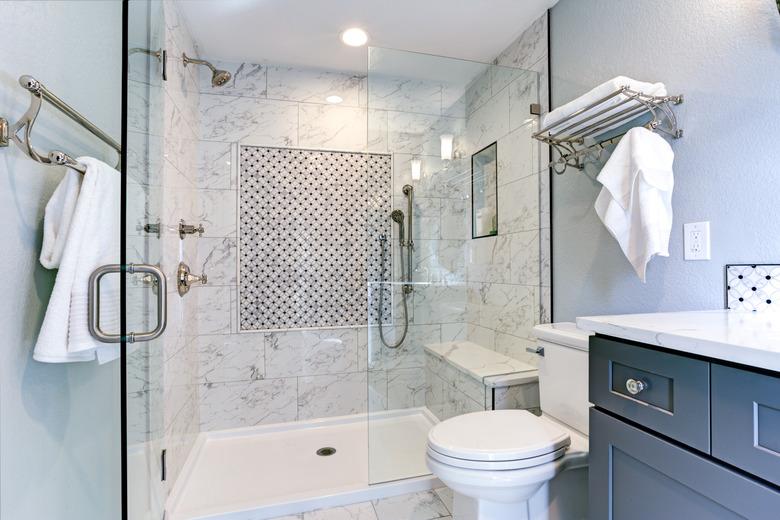How To Adjust A Symmons Pressure-Balancing Shower Valve
A Symmons pressure-balancing shower valve improves the comfort and safety of your shower by eliminating sudden changes in water temperature. You can adjust a Symmons pressure-balancing shower valve to control the maximum ratio of hot water to cold water, which can also help prevent your shower from getting too hot.
How Pressure-Balancing Valves Work
When someone flushes a toilet, turns on a faucet, starts the dishwasher or otherwise uses a source of water in the home, some of the water being directed toward your shower suddenly gets rerouted. In turn, this can cause a drop in the shower's water temperature.
Cold water being used in the kitchen, for example, would mean less cold water in your shower. If the temperature change produces enough heat, you could scald your skin. Instead, a pressure-balancing valve reacts to the drop in cold-water pressure and ensures the hot-water pressure drops the same amount, thus preserving the hot/cold ratio of your shower.
Pressuring Balancing vs. Thermostatic Valves
Pressure-balancing valves achieve the same end result as thermostatic valves: a consistent water temperature in the shower. Therefore, some people make the mistake of using these terms interchangeably. In reality, thermostatic valves work a little differently.
The element inside a thermostatic valve reacts to the water temperature, not the water pressure. You can adjust these valves so that water above a certain temperature cannot exit the faucet or showerhead.
With pressure-balancing valves, only the water pressure is taken into consideration. You can somewhat control the temperature of the hot water by adjusting the hot-to-cold water ratio within the valve. The valve then maintains this ratio when the shower is in use.
Why These Valves Need Adjustments
Because pressure-balancing valves don't react to the temperature of the water, it's possible for very hot water to exit the faucet or showerhead and scald your skin. The temperature of your water heater is essentially the temperature that will exit the hot-water pipe if no cold water is mixed in with it. Many people keep their water heaters between 120 and 140 degrees Fahrenheit to prevent the growth of bacteria, but these temperatures can scald skin within six seconds to five minutes of exposure.
Adjusting the pressure-balancing valve's built-in "hot water stop" will limit the amount of hot water that can exit the valve so that the ratio of hot to cold water decreases, keeping the overall temperature of the water at a safer level. On the other hand, if you think your shower water is way too cold, opening the hot water stop on your Symmons pressure-balancing shower valve could help.
Adjusting a Symmons Shower Valve
To access the pressure-balancing mechanism on a Symmons shower valve, use a hex key or Phillips screwdriver to loosen the setscrew on the handle and then pull off the handle. Twist the decorative cap over the cartridge counterclockwise to remove it. Now, look for a screw. This controls how much hot water can come into the valve by physically limiting how far your Symmons shower handle can move.
Place the shower handle back in position temporarily and open it all the way up, allowing water to exit the showerhead. Use a flathead screwdriver to turn the screw slightly to the left (counterclockwise) to allow the shower handle to move further than it could before. Take care because the water will now get hot.
Adjust the handle until the water temperature is as hot as you'd ever want it to be and then turn the screw clockwise to stop the handle from moving beyond this point. Take off the handle again, reattach the decorative cover and replace the faucet handle. Tighten the handle's setscrew to finish.
